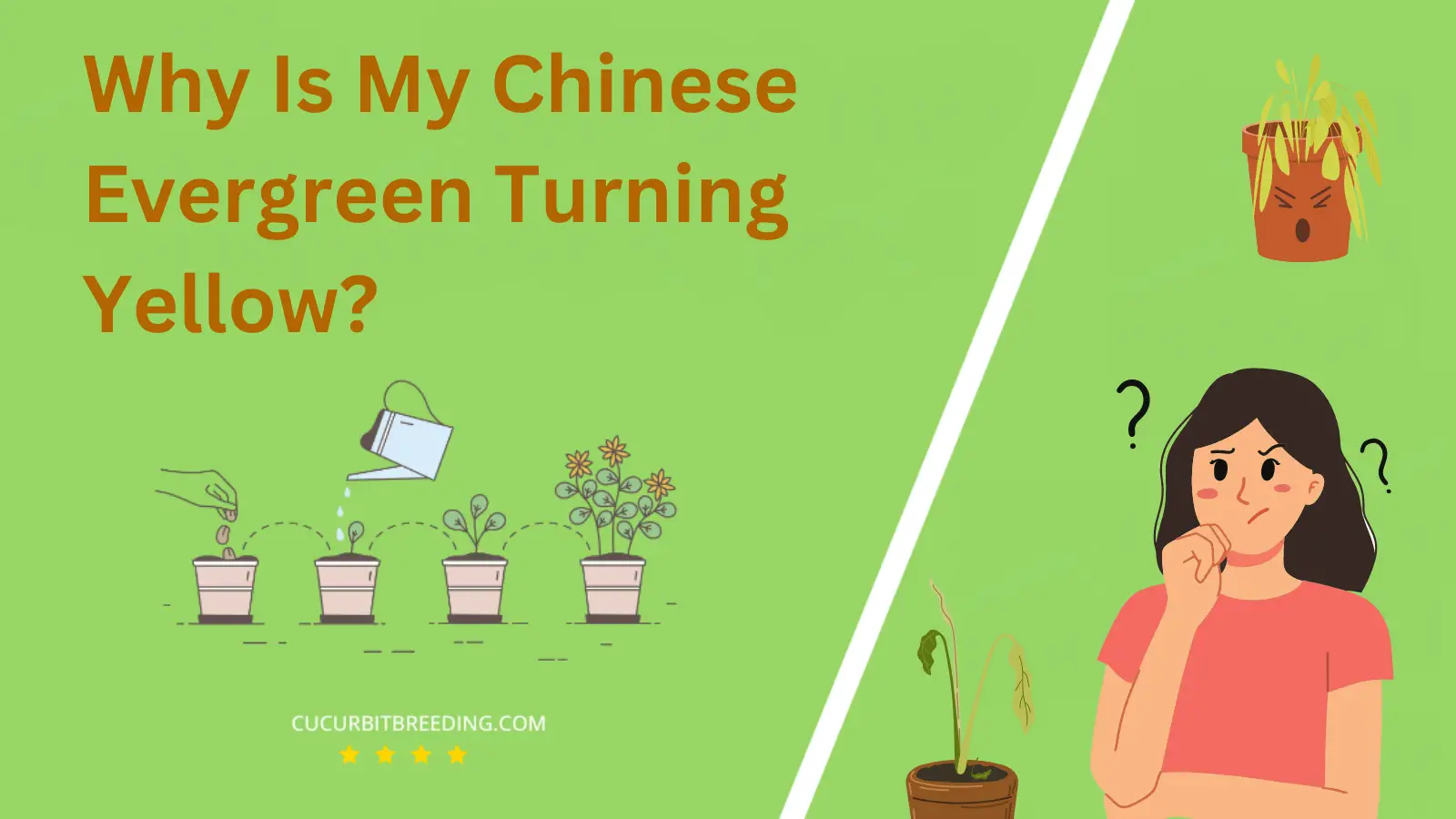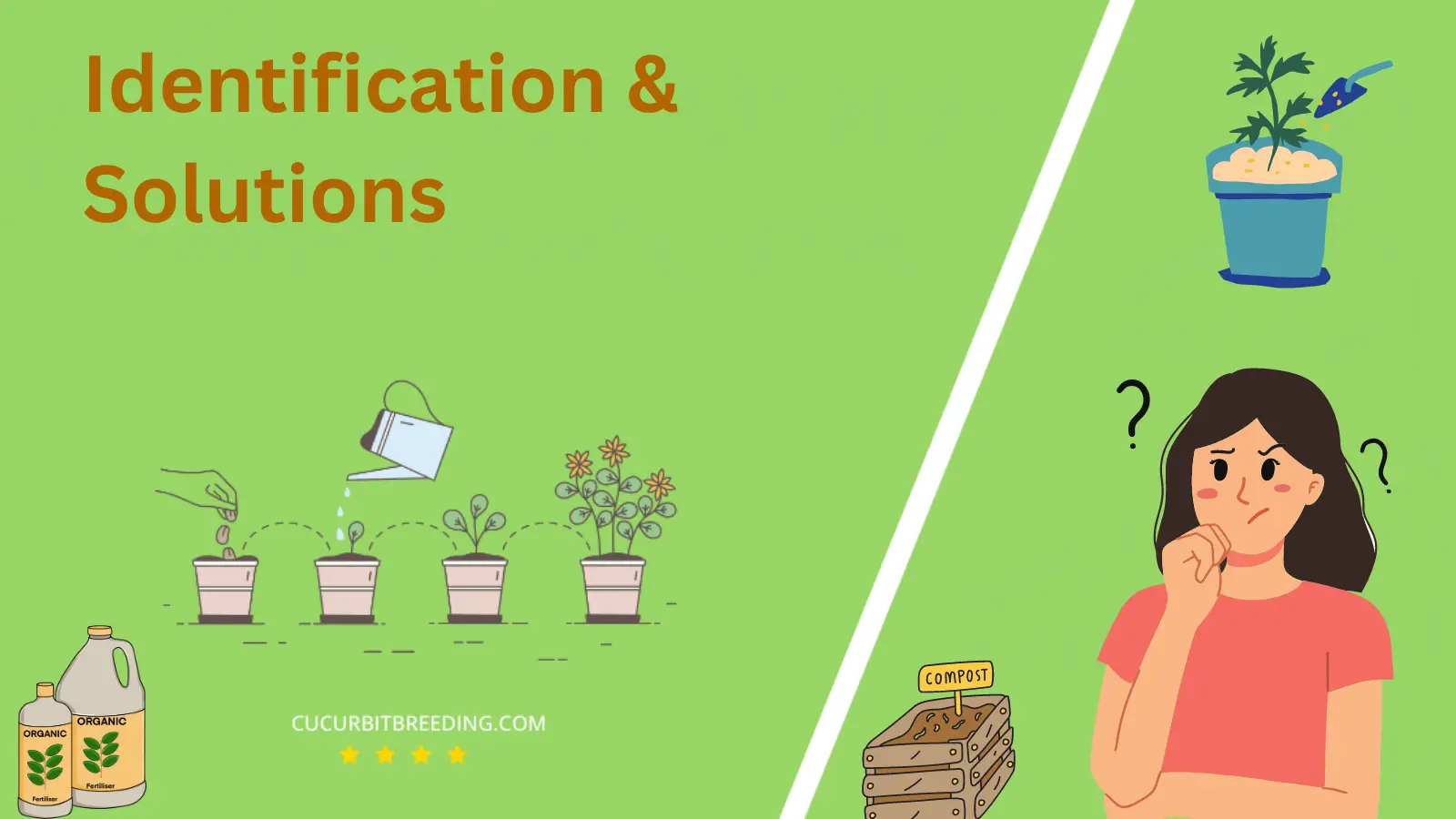
Deciphering the foliage of plants is something every pro gardener has mastered, and a typical query they face is, “Why is my Chinese Evergreen turning yellow?” It’s an issue that triggers anxiety in the hearts of plant lovers worldwide.
Your Chinese Evergreen, with its lush, vibrant foliage, could indeed start displaying alarming signs, as the lush green gives way to a worrisome yellow. However, the cause of this can be as varied as nature itself. Stay tuned as we uncover the mystery behind this alarming transformation.
Why Is My Chinese Evergreen Turning Yellow?
1. Lack of sunlight
| Description | Causes chlorophyll breakdown, reducing photosynthesis and leading to yellowing of leaves. |
|---|---|
| Solution | Increase sunlight exposure. |
Chinese evergreens (Aglaonema) are known for their tolerance of lower light conditions, but an extreme lack of sunlight can cause the leaves to turn yellow. Insufficient Lighting and Photosynthesis Process: Without adequate light, the plant can’t effectively carry out photosynthesis, the process by which plants convert light into the energy they need for growth. This can lead to chlorosis, which is the yellowing of leaf tissue due to the lack or absence of chlorophyll.
Solution – Optimal Sunlight Exposure: To resolve this issue, move your Chinese evergreen to a location where it will receive more light. However, avoid direct sunlight, as it can scorch and damage the leaves. The plant thrives in locations with filtered light, like in front of a north-facing window or where it can receive bright indirect light for several hours a day.
Solution – Artificial Lighting: In cases where natural light is limited, such as in an office or a basement, you can utilize a fluorescent light or a specialized grow light to offer supplemental lighting. Ensuring your Chinese evergreen receives enough light can drastically improve its overall health and prevent it from turning yellow.
2. Overwatering
| Description | Excessive water leads to yellowing of leaves in Chinese Evergreen due to root suffocation. |
|---|---|
| Solution | Reduce watering frequency and ensure proper drainage to prevent root rot and yellowing leaves. |
Effect of Overwatering on Chinese Evergreen: Overwatering is a common issue that can result in the yellowing of Chinese Evergreen plants. This is because the plant is unable to take up necessary oxygen through the roots when they are submerged in water for too long. It essentially drowns, causing the leaves to turn yellow as they struggle for nutrients and air. Overwatering can also lead to root rot, a deadly plant disease triggered by waterlogged soil.
Solution to Overwatering: To deal with overwatering, you should change your watering schedule. The Chinese Evergreen does not require frequent watering. Wait until the top inch or so of the soil is dry before watering it again. It’s also crucial to ensure the pot has adequate drainage to prevent water from sitting at the bottom. If the plant is already suffering from severe overwatering, you may need to repot it into fresh soil to help regenerate the root system.
3. Nutrient deficiencies
| Description | cause chlorophyll degradation, reducing photosynthesis and leading to yellowing of the leaves. |
|---|---|
| Solution | Provide a balanced fertilizer to address nutrient deficiencies, promoting healthy growth and preventing yellowing. |
Chinese evergreen, or Aglaonema, could turn yellow due to a lack of essential nutrients. Nutrient deficiencies prevent your plant from performing its photosynthesis process efficiently, causing the foliage to discolor and looking unhealthy.
To resolve this, start by implementing regular feeding into your plant care routine. Aglaonema plants do not need copious amounts of fertilizer, but they do benefit from regular feeding. A balanced liquid fertilizer that’s been diluted half strength is an excellent choice for these tropical plants. Ensure that it contains micro-nutrients like iron, manganese, and zinc, which are often deficient in indoor conditions.
Another solution is to refresh your plant’s soil to recharge its nutrient content. Every year or two, repot the plant with fresh, nutrient-rich potting soil. For Chinese evergreen, a well-draining, peaty commercial potting mix is ideal. Just ensure it is rich in organic matter.
Lastly, maintain optimal watering. Overwatering can lead to root rot, diminishing the plant’s ability to take up nutrients. Water your Chinese evergreen only when the top inch of soil is dry.
By recognizing and addressing nutrient deficiencies, your Chinese evergreen should regain its vibrant, lush color. Remember for plants as with people, nutrition matters.
4. Pest infestation
| Description | cause chlorophyll degradation, reducing photosynthesis and leading to yellowing of the leaves. |
|---|---|
| Solution | Provide a balanced fertilizer to address nutrient deficiencies, promoting healthy growth and preventing yellowing. |
Chinese evergreen plants can turn yellow due to a pest infestation. Common pests like aphids, mealybugs, and spider mites feed on the plant’s vital nutrients, weakening it, disrupting the photosynthesis process, and causing its leaves to turn yellow.
Furthermore, these pests can spread viral and fungal diseases that worsened the color change. This can severely affect the plant’s overall health and growth.
You can deal with these pests through various pest control methods. Start by removing the yellowing leaves to prevent any possible disease from spreading. For minor infestations, wipe the plant’s leaves using a cloth dipped in a soapy water solution. This helps remove and kill the unwanted pests.
For severe cases, you can resort to using insecticidal soap or organic pesticides available in any garden store. Just ensure to follow the manufacturer’s instructions. Regularly check your Chinese evergreen to catch any pest infestations early before it becomes a serious problem for the plant.

5. Temperature stress
| Description | Provide a balanced fertilizer to address nutrient deficiencies, promoting healthy growth and preventing yellowing. |
|---|---|
| Solution | Adjust temperature to optimal range for growth and avoid extreme fluctuations to prevent yellowing leaves. |
Temperature stress can often result in a Chinese Evergreen, or Aglaonema, turning yellow. This plant prefers a warm environment, typically between 70 to 85 degrees Fahrenheit during the day and a bit cooler at night. Inconsistent or radical fluctuations in temperature can cause stress on the plant, leading to the yellowing of foliage as a form of damage.
The optimal solution would be to regulate the plant’s environment as much as possible, keeping it in a consistent, warm temperature. Keep it away from drafts, such as windows or doors that are frequently opened and closed. You should also avoid placing the plant near heating or cooling vents, as they can drastically alter the air temperature. Lastly, beware of outside weather changes. If it’s winter and your plant is near a window, move your Chinese Evergreen to a warmer area. A careful observation of temperatures will help maintain the green, healthy leaves of your Chinese Evergreen.
6. Improper pH levels
| Description | Imbalanced pH levels can cause leaves to turn yellow in a Chinese evergreen. |
|---|---|
| Solution | Adjust the pH level of the soil to prevent yellowing of the Chinese evergreen’s leaves. |
Improper pH levels can significantly affect the health of your Chinese Evergreen, causing it to turn yellow. Plant survival is heavily dependent on the soil pH, which determines how well nutrients are absorbed by the plant roots. High acidity or alkalinity can interfere with nutrient absorption, leading to yellowing leaves as the plant struggles with nutrient deficiency.
To rectify this issue, you should test the pH of your soil. You can do this using a soil test kit obtained from any gardening store. Chinese Evergreens prefer slightly acidic to neutral soil, with a pH range of 6.1 to 6.5. If the soil is too acidic or too alkaline, you will need to amend it. If it’s too acidic, materials such as lime or wood ash can help to raise the pH. Conversely, if the soil is too alkaline, you can use substances like elemental sulphur, aluminum sulphate, or iron sulphate to lower the pH. Remember that changing soil pH is a gradual process, so don’t expect immediate results.
7. Natural aging process
| Description | The natural aging process of leaves causes them to turn yellow due to reduced chlorophyll production. |
|---|---|
| Solution | Maintaining a healthy lifestyle with regular exercise and a balanced diet can slow down natural aging. |
Your Chinese evergreen might be turning yellow due to overwatering. Overwatering often leads to a condition called root rot where the plant’s roots are soaked with too much water, depriving them of the necessary oxygen they need. This, in turn, causes the plant to suffocate and starve, causing the leaves to turn yellow.
The solution to this is to ensure a proper watering schedule. Assess the plant’s water needs based on the environment and its natural habitats. Chinese evergreens prefer to dry out between waterings, so it’s best to let the top inch or two of soil to dry out before watering again. Moreover, ensure that your pot has good drainage to avoid water from sitting in the bottom.
For severe overwatering cases, you might need to repot the plant and trim the rotted roots. Use fresh, well-draining soil to avoid buildup of moisture. Lastly, avoid placing your Chinese evergreen in a saucer with water as this can contribute to excessive moisture around the root area.